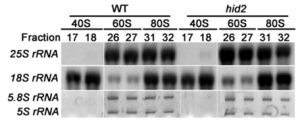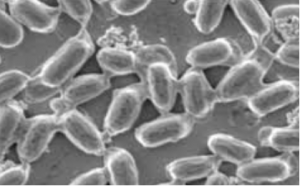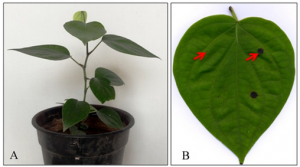|
Carbon starvation raises capacities in bacterial antibiotic resistance and viral auxiliary carbon metabolism in soils
Tuesday, 2024/04/23 | 08:30:41
|
|
Qicheng Xu, He Zhang, Philippe Vandenkoornhuyse, Shiwei Guo, Yakov Kuzyakov, Qirong Shen, and Ning Ling PNAS April 10, 2024; 121 (16) e2318160121 SignificanceMicrobial adaptations to carbon availability are crucial for predicting ecosystem responses to environmental changes. We demonstrated that specialization for organic carbon utilization and genome size reduction in carbon-poor soils decrease functional redundancy and consequently increase vulnerability to environmental changes. The raised antibiotic resistance gene abundance underscores concerns about the spread of antibiotic resistance in chemical-fertilizer-based agriculture. Our results also unveil the role of virus-bacteria interactions in increasing host competitiveness and environmental adaptability. Consequently, carbon limitation common in chemical-fertilizer-based agriculture intensifies microbial competition, driving organic carbon metabolic adaptations, increasing antibiotic resistance, and intensifying virus–host interactions. All these are crucial for microbial competition as driving evolutionary trajectories with implications to increase soil carbon storage, mitigate antibiotic resistance spread, and advance sustainable agriculture. AbstractOrganic carbon availability in soil is crucial for shaping microbial communities, yet, uncertainties persist concerning microbial adaptations to carbon levels and the ensuing ecological and evolutionary consequences. We investigated organic carbon metabolism, antibiotic resistance, and virus–host interactions in soils subjected to 40 y of chemical and organic fertilization that led to contrasting carbon availability: carbon-poor and carbon-rich soils, respectively. Carbon-poor soils drove the enrichment of putative genes involved in organic matter decomposition and exhibited specialization in utilizing complex organic compounds, reflecting scramble competition. This specialization confers a competitive advantage of microbial communities in carbon-poor soils but reduces their buffering capacity in terms of organic carbon metabolisms, making them more vulnerable to environmental fluctuations. Additionally, in carbon-poor soils, viral auxiliary metabolic genes linked to organic carbon metabolism increased host competitiveness and environmental adaptability through a strategy akin to “piggyback the winner.” Furthermore, putative antibiotic resistance genes, particularly in low-abundance drug categories, were enriched in carbon-poor soils as an evolutionary consequence of chemical warfare (i.e., interference competition). This raises concerns about the potential dissemination of antibiotic resistance from conventional agriculture that relies on chemical-only fertilization. Consequently, carbon starvation resulting from long-term chemical-only fertilization increases microbial adaptations to competition, underscoring the importance of implementing sustainable agricultural practices to mitigate the emergence and spread of antimicrobial resistance and to increase soil carbon storage.
See https://www.pnas.org/doi/10.1073/pnas.2318160121
Figure 1: Summary of putative CAZyme genes in chemical-only fertilized soils (CF) and organic-only fertilized soils (OF). (A) Abundance of CAZyme genes at the class level. Red and blue dots indicate enrichment in CF and OF, respectively. GT: glycosyl transferase; GH: glycoside hydrolase; CE: carbohydrate esterase; CBM, carbohydrate-binding module; PL: polysaccharide lyase; AA, auxiliary activities. The annotation of CAZyme genes was based on the Carbohydrate-Active enZYmes database using open reading frames (ORFs) from metagenomics. A linear mixed model was used to compare gene abundance in CF and OF. In the model, the “Fertilization regime” (CF or OF) factor was fixed, and the “Sites” (four locations) factor was considered a random effect. (B) Enriched CAZyme genes in different soils. The size of the circles indicates the response ratio. The response ratio was determined by calculating the natural logarithm of the ratio of the mean gene abundances between CF and OF. (C) Microbes contributing to the enriched CAZyme genes. The size of the circles and octagons indicate the contribution of microbes and gene abundance, respectively. The font size matches the size of the corresponding circles or octagons. The colors of the circles indicate microbial phyla, and the colors of the octagons indicate CAZyme gene enrichment. The relationships between the functions and their contributors were estimated through sequence annotation against both functional and taxonomic databases. (D) Potential substrates of enriched CAZyme genes. The related processes are grouped under biosynthesis, binding, biodegradation, and auxiliary activities. This information was sourced from the Carbohydrate-Active enZYmes database.
|
|
|
|
[ Other News ]___________________________________________________
|


 Curently online :
Curently online :
 Total visitors :
Total visitors :
(292).png)



















